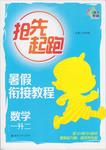题目内容
What color is Mary's hair?
A.Red. B.Blonde. C.Black.
 南大教辅抢先起跑暑假衔接教程南京大学出版社系列答案
南大教辅抢先起跑暑假衔接教程南京大学出版社系列答案Explore Lancashire Museums
Museum of Lancashire Museum of Lancashire is one of Preston’s oldest buildings. It is your gateway to more than 2000 years of Lacashire’s history. This museum is housed in the past Quarter Sessions House. Call 01772 534075 or Email museumoflancashire@lancashire.gov.uk Address: Stanley Street, Preston |
Clitheroe Castle Museum The museum stands high on Castle Hill, which has watched Clitheroe’s skyline for over 800 years. Our museum will take you on a journey through 350 million years history of the local area. Call 01200 424568 or Email clitheroccastle@lancashire.gov.uk Address: Castle Hill, Clitheroe |
Lancaster City Museum Lancaster City Museum is housed in Georgian building. It tells the story of Lancaster’s past from the Roman times. You can also see our collection of paintings of that time. Call 01524 646378 or Email lacastercitymuseum@lancashire.gov.uk Address: Market Square, Lancaster |
Cottage Museum Cottage Museum tells you about early Victorian life and lets you discover tools used in the 19th century. Call 01524 382264 or Email cottagemuseum@lancashire.gov.uk Address:15 Castle Hill, Lancaster |
1.Which museum is one of Preston’s oldest buildings?
A.Cottage Museum. B.Museum of Lancashire.
C.Lancaster City Museum. D.Clitheroe Castle Museum.
2.Where is Clitheroe Castle Museum?
A.At 15 Castle Hill. B.At Stanley Street, Preston.
C.On Castle Hill, Clitheroe. D.At Market Square, Lancaster.
3.You can go to Cottage Museum to learn about _________.
A.2000 years history of Lancashire B.350 million years history of Clitheroe
C.Lancaster's past from the Roman times D.early Victorian life and tools from that time




